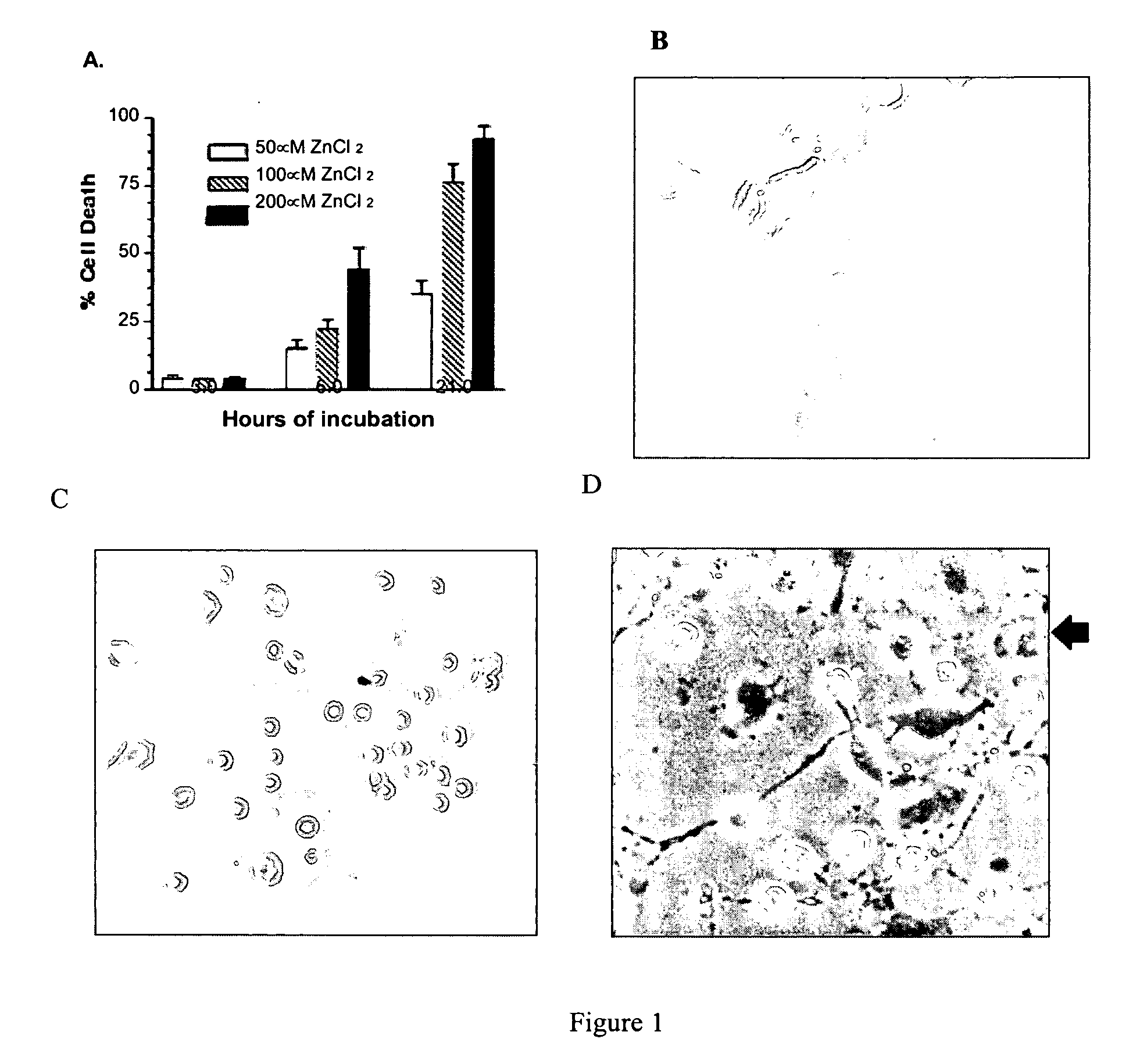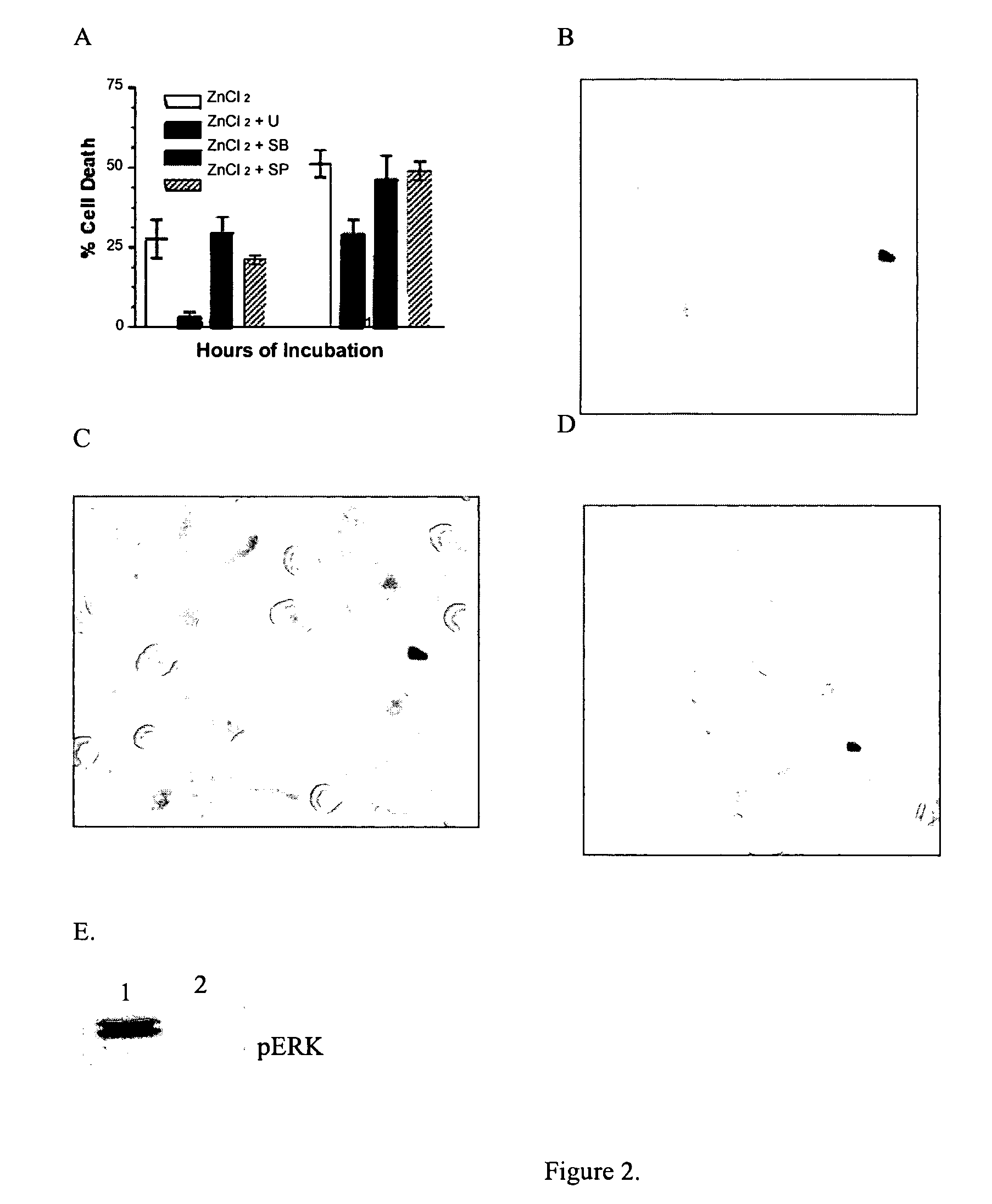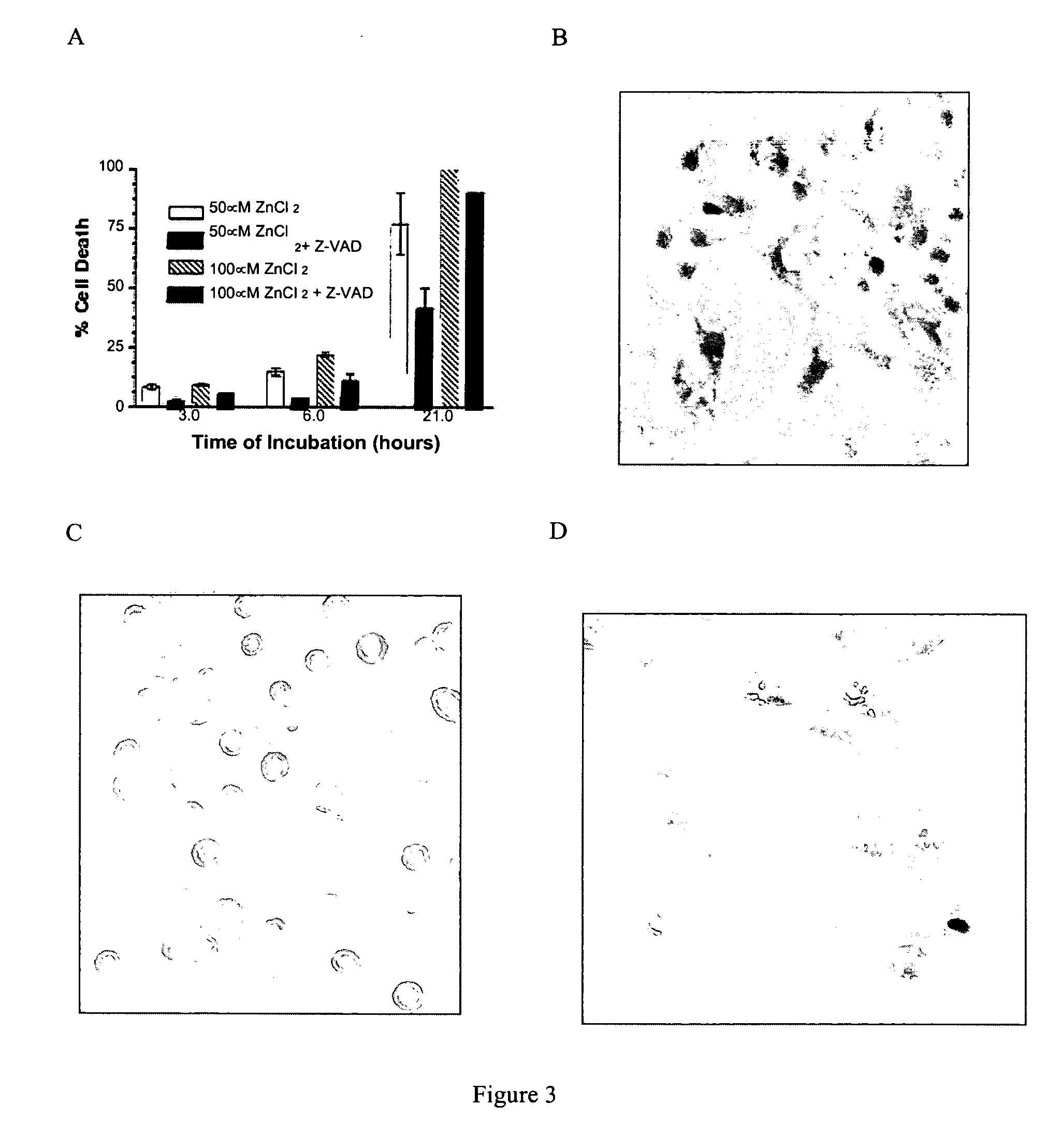Methods and compositions for selectively killing cells
- Summary
- Abstract
- Description
- Claims
- Application Information
AI Technical Summary
Benefits of technology
Problems solved by technology
Method used
Image
Examples
example 1
Effects of Zinc on PC12 Cells
[0089] The addition of zinc to PC12 cells in vitro leads to time and dose-dependent cell death. This occurs with either undifferentiated or differentiated PC12 cells. In both cases, within 5 hours, cell death was accompanied by the progression to a more rounded morphology, shrinkage in overall cell size, and membrane blebbing, which is indicative of apoptosis. With the higher zinc concentrations (<100 μM), or longer time periods, significant cell lysis is also observed, which is indicative of necrosis, a novel observation for zinc .
[0090] When the PC12 cells were preincubated with the MEK inhibitor, U1026, zinc-induced cell death was greatly attenuated. Under those conditions, zinc cytotoxicity occurred with a delayed time-course, requiring overnight incubations to observe significant cell death. Under such circumstances, a low percentage of the cell populations underwent morphological changes associated with cell death, with cell lysis (an indicator o...
example 2
Increased Intracellular Zinc Induces Cell Death In Multiple Cell Types
[0092] Exemplary cell types were treated in vitro with varying amounts of zinc (zinc chloride or zinc sulfate), in the presence or absence of the zinc ionophore pyrithione. As is depicted in tables 2 and 3, lower concentrations of zinc are effective in killing cells when the zinc ionophore is present, indicating that zinc function intracellularly. Cell death involves both apoptosis and necrosis as determined by morphological observation.
TABLE 2Zinc-induced death of RAW (macrophage) cellsTreatmentHours of25 μM25 μM +50 μM50 μM +100 μMIncubationzincpyrzincpyrzinc0.00.00.01.00.00.03.00.015.05.00.035.00.050.018.020.0100.0
pyr = pyrithione (zinc ionophore); numbers = % cell death
[0093]
TABLE 3Zinc-induced death of N18TG2 (neuroblastoma) cells24 h incubationTreatment% death10μM zinc + pyr8625μM zinc1925μM zinc + pyr8750μM zinc7575μM zinc84150μM zinc90
example 3
Zinc Kills IIC9 Cells in an ERK-Dependent Manner
[0094] In this example and the following examples, we show that zinc, (as in other cell lines such as PC12, RAW macrophages, and N18TG2 neuroblastoma cells) induces the apoptotic death of IIC9 embryonic fibroblasts. As with PC12 cells, death is ERK-dependent. Unlike previous examples, however, IIC9 cells are p53 minus. Thus zinc-mediated apoptosis occurs via a p53-independent mechanism. Death is also facilitated by the presence of the zinc ionophore, pyrithione, indicating that intracellular zinc initiates the death response. To understand the upstream activator of zinc-induced ERK1 / 2 activation, we examined the role of Ras in this process. Expression of dn-(dominant negative) Ras attenuates ERK1 / 2 activation by zinc and correspondingly reduces its cytotoxic effects. Raf-RBD pull-down experiments were used to confirm that zinc treatment activates Ras and to identify the specific Ras isoform that is activated. Importantly, zinc uniquel...
PUM
| Property | Measurement | Unit |
|---|---|---|
| Fraction | aaaaa | aaaaa |
| Fraction | aaaaa | aaaaa |
| Fraction | aaaaa | aaaaa |
Abstract
Description
Claims
Application Information
 Login to View More
Login to View More - R&D
- Intellectual Property
- Life Sciences
- Materials
- Tech Scout
- Unparalleled Data Quality
- Higher Quality Content
- 60% Fewer Hallucinations
Browse by: Latest US Patents, China's latest patents, Technical Efficacy Thesaurus, Application Domain, Technology Topic, Popular Technical Reports.
© 2025 PatSnap. All rights reserved.Legal|Privacy policy|Modern Slavery Act Transparency Statement|Sitemap|About US| Contact US: help@patsnap.com



